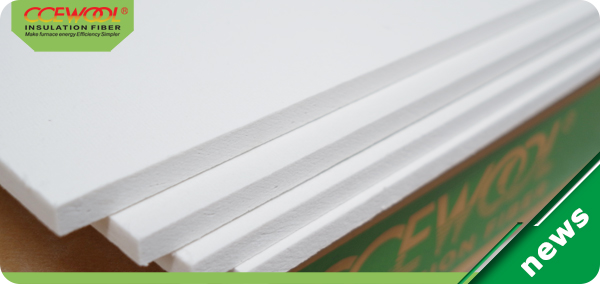In the steel industry, the hot blast stove of a blast furnace is a core unit that ensures efficient ironmaking. Its furnace walls are exposed year-round to extreme temperatures of around 1000℃. For a long time, traditional calcium silicate boards have been widely used for wall insulation, but in actual operation, they have revealed three major problems that have become critical bottlenecks limiting production efficiency and cost optimization.
Three Major Drawbacks of Traditional Calcium Silicate Boards
Unstable thermal performance
At room temperature, calcium silicate boards have a thermal conductivity of about 0.08 W/m·K, but once exposed to temperatures above 1000℃, it quickly rises to over 0.2 W/m·K. The insulation layer fails, the outer furnace wall temperature remains high, and significant heat is wasted.
Insufficient temperature resistance, frequent replacement
The long-term temperature limit of calcium silicate boards is only 800–1000℃. Under hot blast stove conditions, cracks of 5–8 cm and spalling typically appear within just a few months, leading to frequent shutdowns for repairs and high maintenance costs.
Low energy efficiency
Due to rising thermal conductivity and material degradation, the thermal efficiency of traditional hot blast stoves is generally limited to around 65%, far below advanced standards, resulting in heavy energy loss and high operating costs.
Three Core Advantages of CCEWOOL® Ceramic Insulation Board
Low thermal conductivity, excellent temperature control
CCEWOOL® ceramic insulation boards are produced using high-speed centrifugal spinning at 11,000 r/min, keeping shot content below 15%. As a result, even at 1000℃, the boards maintain a stable, low thermal conductivity (about 0.19 W/m·K). After installation, the outer wall temperature of the furnace drops from dangerously high levels to safer ranges, significantly reducing heat loss and boosting thermal efficiency to over 80%.
Outstanding high-temperature resistance, longer service life
CCEWOOL® refractory ceramic insulation boards are processed with a fully automated drying system, completing deep drying in just two hours. This ensures reliable high-temperature performance, with a long-term temperature resistance of up to 1400℃—far exceeding hot blast stove requirements. After one year of operation at high temperatures, the furnace lining retains over 98% integrity, preventing cracks and spalling. Maintenance cycles extend from several months to over a year, dramatically lowering repair costs.
Energy savings and cost reduction, supporting sustainability
Stable insulation performance not only cuts energy consumption but also reduces unplanned expenses from furnace shutdowns and repairs. A single hot blast stove can achieve significant annual energy savings and cost optimization, strengthening overall competitiveness.
As the steel industry faces energy consumption pressures and environmental challenges, CCEWOOL® ceramic insulation board, with its triple advantages of low thermal conductivity, excellent temperature resistance, and lifecycle energy savings, provides a reliable solution for blast furnace hot blast stove lining insulation. It not only optimizes furnace thermal efficiency and operational stability, but also helps companies reduce maintenance costs, driving the steel industry towards a more efficient, green, and sustainable future.
Post time: Sep-28-2025


